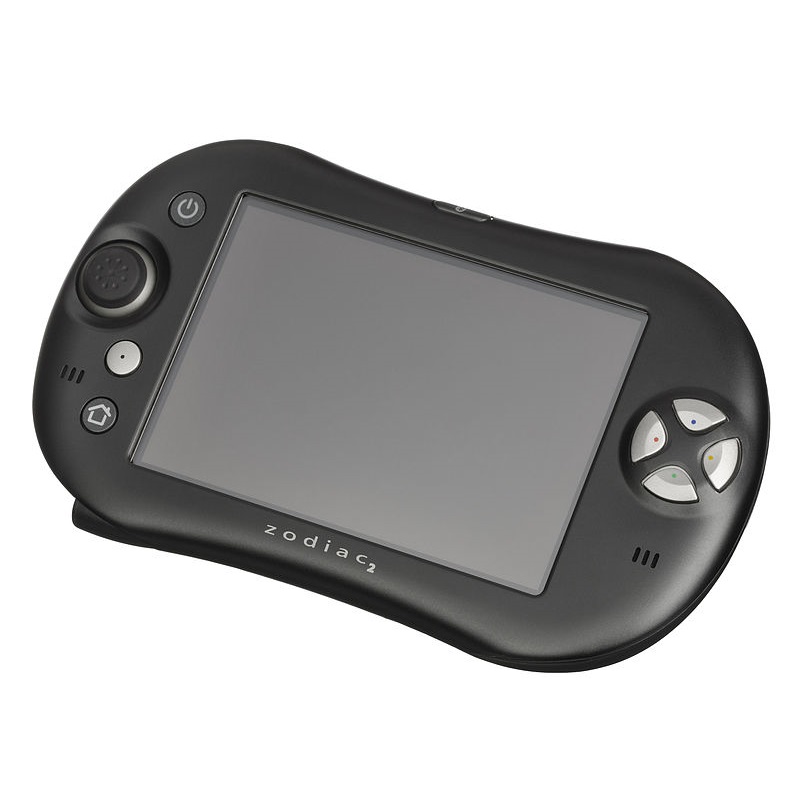|
History
In 1996, Palm Computing, Inc released PalmOS for their line of PDA called the Palm Pilot. Over the year, Palm developed several version of their OS and by the years 2000, it was everywhere: PDA, SmartPhone, GPS, etc. A lots of games were develop for the PalmOS to play on PDAs, but no real PalmOS-based gaming devices existed at the time,
In May 2001, former Palm executives founded Tapwave with the intention of resolving this situation. After gathering money through a round of venture capital financing, Tapwave started to work on their flagship product, the Zodiac. In May 2003, Tapwave announced the device at E3. The pre-order began in September and the product was officially launched in October.
Release
The release of the Zodiac when incredibility well. The devices was available in 2 versions : the Zodiac 1 with 32MB of disk space for $299 and the Zodiac 2 with 128MB for $399. The devices had raving reviews from the industries and was already compatibles with the hundreds of games made for PalmOS. Although the library of compatible games was already huge, they were mostly freeware and shareware of questionable quality. Tapwave knew they needed some heavy hitter to entice the handheld gamers. With the release of Madden 2005, Duke Nukem, Doom II and Tony Hawk’s Pro Skater 4 and with the 1,200+ developer that had signed up for the Tapwave developer program, Tapwave though they had it all figured out.
Although the review were very good, Tapwave had an hard time to convince gamer to buy their platform. All hell broke loose on November 21st 2004 when Nintendo released their Nintendo DS in North America. The sale figures of the Zodiac plummeted in the US. Tapwave whom had just entered in several partnership for the international distribution of the Zodiac took the hit hoping that the international market would help raising the sales giving time to Tapwave to develop new market.
Tapwave continue to add feature to the Zodiac like support for Audio Book, Web Browsing and Email but the final nail of the coffin happen on March 24, 2005 when the PSP was released in North America. After the release of the PSP, Tapwave started to liquidate their inventory in huge blow-out sale. In July, Tapwave discontinued the sale of the Zodiac for good. In total, less than 200,000 units were sold all around the world
Games
Being a PalmOS device, the Zodiac had access to the large library of PalmOS compatible games that were released for other devices, but had also it’s own games. Some games, exclusive to the console would only work on a Zodiac device, while other called “Zodiac tuned”, would take advantage of certain function of the Zodiac (like vibration or shoulder button), but could also be played on any other PalmOS devices. Games were also release in various format : SD-Cards, CD-ROM or Download.
SD-Cards Exclusive Games
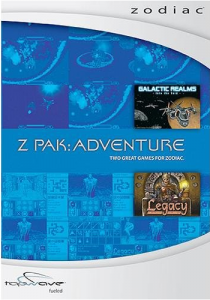 | 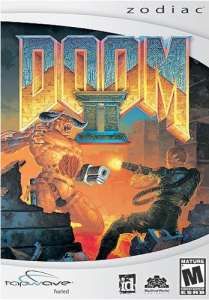 | 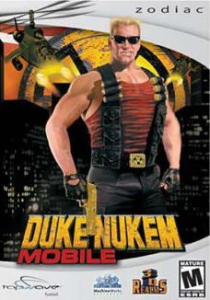 | |||
| Adventure Pak | Doom II ($29.99) | Duke Nukem Mobile ($29.99) | |||
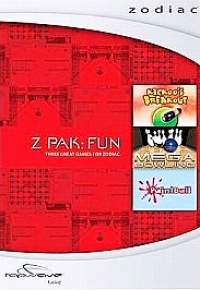 | 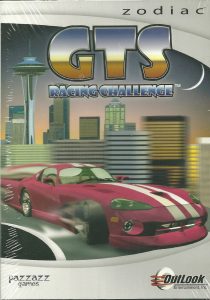 | 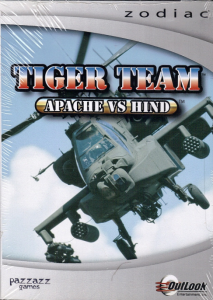 | |||
| Fun Pak | Tiger Team: Apache vs. Hind ($29.99) | ||||
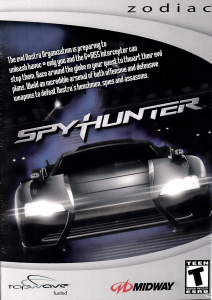 | 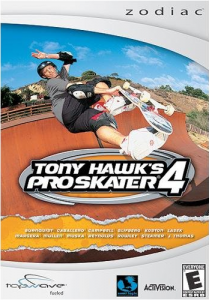 | ||||
| Spy Hunter ($29.99) | Tony Hawk’s Pro Skater 4 ($29.99) |
CD-ROM Exclusive Games
- Stunt Car Extreme – Comes with the Zodiac off the included CD.
Download Exclusive Games
- Acedior ($24.99)
- Altered Beast ($19.99)
- Animated Dudes ($24.95)
- AnotherBall ($14.99)
- Atari Retro($ 29.95)
- Avalanche ($14.99)
- Bike or Die ($14.95)
- Billiards ($22.99)
- Bubble Shooter 2 ($16.95)
- Colony ($14.99)
- Crossword Puzzles ($19.95)
- Daedalus 3D – The Labyrinth ($29.99)
- Dreamway ($19.95)
- Firefly ($19.99)
- FireHammer ($14.99)
- Fish Tycoon ($19.95)
- Frutakia ($12.95)
- Galactic Realms ($19.99)
- Gloop Zero ($14.95)
- Golden Axe ($19.99)
- Interstellar Flames ($9.99)
- Jet Ducks ($14.95)
- Kickoo’s Breakout ($12.50)
- Legacy ($19.99)
- Madden NFL 2005 ($29.99)
- MegaBowling ($14.99)
- MicroQuad ($14.95)
- Orbz ($19.99)
- Paintball ($12.95)
- Pocket Mini Golf ($19.95)
- Pocket Mini Golf eXtra ($19.95)
- RifleSLUGS-W: Wild Web Wars ($19.99)
- Table Tennis 3D ($10.00)
- The Green Myste ($24.99)
- Tots ‘n’ Togs ($19.95)
- Warfare Inc. ($29.99)
- Xploids ($19.99)
- ZapEm ($9.99)
Technical Specification
- CPU: Motorola i.MX1 ARM9 processor (200 MHz)
- Memory: Zodiac 1 had 32 MB. Zodiac 2 had 128 MB.
- Memory: 10 MB Dedicated to the System Dynamic RAM
- Graphic Accelerator: ATI Imageon W4200 2D graphics accelerator
- Graphic Accelerator: 8 MB dedicated SDRAM
- Display: 3.8 inch 480 x 320, 16-bit color backlit display (65,536 colors)
- Sound: Yamaha sound and stereo speakers, 3.5 mm earphone plug
- Battery: Rechargeable Lithium Batteries – Dual totaling to 1540 mA·h
- Size & Weight: 5.6″ x 3.1″ x 0.55″ (142x79x14 mm), 6.3 ounces (180 g)

